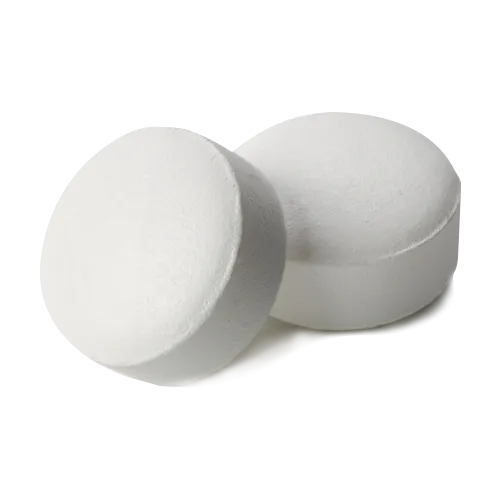Overview
Zoloft, generically known as sertraline, is a selective serotonin reuptake inhibitor (SSRI) used to treat depression, anxiety disorders, obsessive-compulsive disorder (OCD), post-traumatic stress disorder (PTSD), panic disorder, and premenstrual dysphoric disorder (PMDD). It increases serotonin levels in the brain to improve mood and reduce symptoms of mental health conditions.
History of Development and Approval
Developed by Pfizer, Zoloft received FDA approval in 1991 for depression and has since been approved for multiple mental health conditions. Its efficacy and safety, supported by extensive clinical trials, have made it a widely prescribed SSRI.
Key Benefits
- Mood Improvement: Alleviates symptoms of depression and anxiety.
- OCD Management: Reduces obsessive thoughts and compulsive behaviors.
- PTSD Relief: Eases flashbacks and anxiety in PTSD patients.
- PMDD Control: Manages emotional and physical symptoms of PMDD.
Unique Properties
Zoloft’s selective action on serotonin reuptake provides effective symptom relief with a favorable side effect profile, making it suitable for a wide range of mental health conditions across various age groups.
Comparison with Similar Medications
Compared to other SSRIs, Zoloft offers:
- Broad Indications: Approved for multiple disorders, including OCD and PMDD.
- Tolerability: Generally well-tolerated with manageable side effects.
- Flexible Dosing: Adjustable doses for personalized treatment.
Safety and Tolerability
Zoloft is generally well-tolerated, with common side effects including nausea, diarrhea, dizziness, dry mouth, and fatigue, which often subside. Rare serious effects, such as serotonin syndrome or increased suicidal thoughts (especially in young adults), require monitoring. Regular healthcare provider oversight ensures safety.
Indications for Use
Zoloft is indicated for:
- Depression: Major depressive disorder.
- Anxiety Disorders: Generalized anxiety, social anxiety, panic disorder.
- OCD: Obsessive-compulsive disorder in adults and children (6+ years).
- PTSD: Post-traumatic stress disorder.
- PMDD: Premenstrual dysphoric disorder.
Dosage and Administration
Adults: Depression/Anxiety: Start 50 mg once daily, titrate up to 200 mg/day. OCD: 50–200 mg/day. PMDD: 50–150 mg/day (continuous or luteal phase).
Children (6+ years): OCD: Start 25 mg/day, titrate up to 200 mg/day.
Elderly: Start low, adjust cautiously.
Timing: Morning or evening, with/without food.
Notes: Gradual titration; avoid abrupt cessation to prevent withdrawal.
Mechanism of Action
Sertraline inhibits serotonin reuptake, increasing serotonin levels in the brain to improve mood, sleep, and emotional stability.
Composition
Active Ingredient: Sertraline hydrochloride, drives antidepressant effects.
Inactive Ingredients: Cellulose, starch, magnesium stearate for tablet stability.
Side Effects
Common: Nausea, diarrhea, dizziness, dry mouth, fatigue, sweating.
Rare: Insomnia, sexual dysfunction.
Serious: Serotonin syndrome, suicidal thoughts, allergic reactions require urgent care.
Prevention of Side Effects
Start with low doses, titrate slowly, monitor mood changes, especially in young patients. Avoid alcohol; report serious symptoms promptly.
Contraindications
Avoid in hypersensitivity to sertraline or with MAO inhibitors (risk of serotonin syndrome).
Warnings and Precautions
Monitor for suicidal thoughts, especially in adolescents/young adults, and serotonin syndrome. Caution in patients with seizures or bipolar disorder.
Drug Interactions
MAO inhibitors, pimozide increase serotonin syndrome risk; NSAIDs increase bleeding risk. Disclose all medications.
Overdose
Symptoms: dizziness, drowsiness, nausea, seizures, coma. Seek emergency care immediately.
Pharmacokinetics
Absorption: Slow, peak 4.5–8.4 hours.
Distribution: Highly protein-bound.
Metabolism: Liver via CYP2D6, CYP3A4.
Elimination: Urine, feces; half-life ~26 hours.
Dosage Forms
Tablets (25, 50, 100 mg), oral solution (20 mg/mL) for flexible administration.
Pregnancy and Breastfeeding
Use if benefits outweigh risks (Category C); excreted in milk, consult provider for breastfeeding.
Storage
Store at 20°C–25°C (68°F–77°F), dry, light-protected, away from children. Dispose expired properly.
Clinical Evidence
Trials confirm Zoloft’s efficacy in improving mood, reducing anxiety, and managing OCD/PTSD symptoms, with significant benefits over placebo across age groups.
Conclusion
Zoloft is an effective SSRI for various mental health conditions, offering mood improvement and flexible dosing. Adhere to prescribed regimens, monitor side effects, and consult providers for optimal outcomes.




